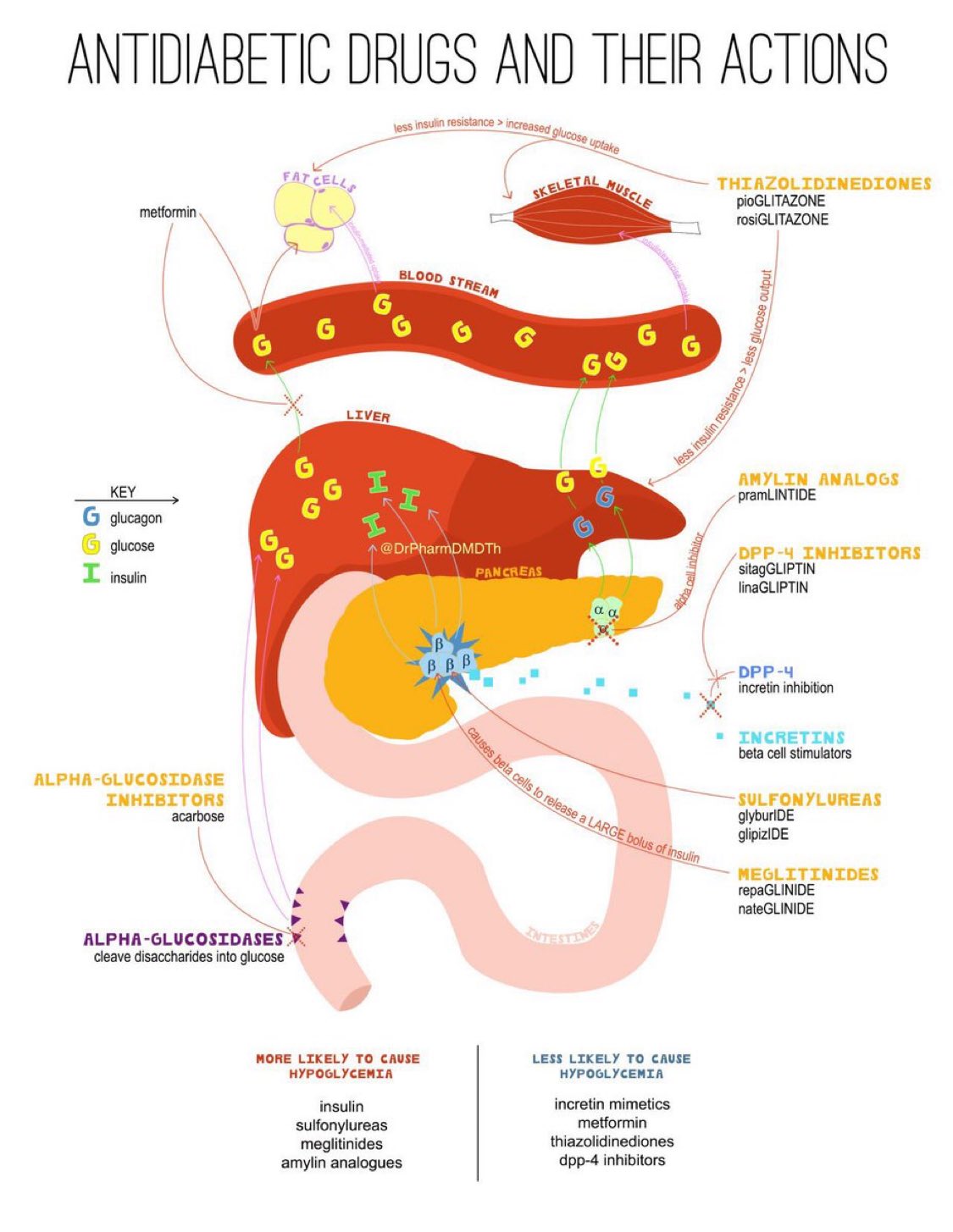
Antidiabetic Drugs and Their Mechanisms — A Simplified Overview
Diabetes management today involves a wide range of medications, each targeting different organs and metabolic pathways to lower blood glucose levels. Understanding where and how each class of drug works can help clinicians personalize therapy and improve patient outcomes.
Let’s break down the key classes of antidiabetic medications and their actions in the body 👇
1. Metformin (Biguanides)
Primary site: Liver
Metformin reduces hepatic glucose production and improves insulin sensitivity in muscle and fat cells. It’s the cornerstone of type 2 diabetes therapy and is less likely to cause hypoglycemia.
2. Thiazolidinediones (TZDs)
Examples: Pioglitazone, Rosiglitazone
Primary sites: Skeletal muscle, adipose tissue
These drugs enhance insulin sensitivity, allowing greater glucose uptake by cells. They act through PPAR-γ activation and are also less likely to cause hypoglycemia.
3. Alpha-Glucosidase Inhibitors
Example: Acarbose
Primary site: Intestine
These delay carbohydrate absorption by inhibiting enzymes that break down disaccharides, reducing post-meal glucose spikes.
4. DPP-4 Inhibitors
Examples: Sitagliptin, Linagliptin
Primary site: Pancreas
By blocking the DPP-4 enzyme, they prolong the action of incretins (GLP-1 and GIP), stimulating insulin release and suppressing glucagon.
5. Incretin Mimetics (GLP-1 Agonists)
Examples: Exenatide, Liraglutide
They mimic natural incretin hormones to boost insulin secretion in a glucose-dependent manner, making hypoglycemia less likely.
6. Sulfonylureas
Examples: Glyburide, Glipizide
Primary site: Pancreas (β-cells)
These stimulate insulin release regardless of glucose level, which increases the risk of hypoglycemia.
7. Meglitinides
Examples: Repaglinide, Nateglinide
Similar to sulfonylureas but with shorter duration, these rapidly trigger insulin release around mealtimes.
8. Amylin Analogs
Example: Pramlintide
Amylin slows gastric emptying, suppresses glucagon, and reduces postprandial glucose spikes—often used alongside insulin therapy.
Hypoglycemia Risk Summary
More likely to cause hypoglycemia:
- Insulin
- Sulfonylureas
- Meglitinides
- Amylin analogs
Less likely to cause hypoglycemia:
- Incretin mimetics
- Metformin
- TZDs
- DPP-4 inhibitors
Takeaway
Each antidiabetic drug acts on a different target — the liver, pancreas, gut, or peripheral tissues — to reduce glucose levels through unique mechanisms. Combining these classes strategically helps tailor treatment, optimize glycemic control, and minimize side effects like hypoglycemia or weight gain.
Source: Unkown